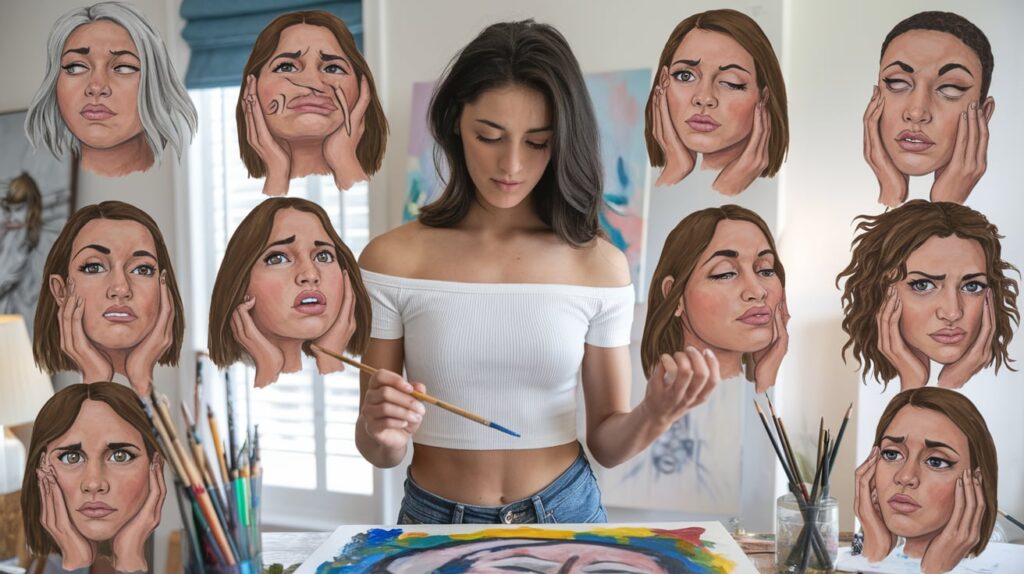
The Expression of Emotions Through Art Faced During Life
Art has always been a profound medium through which people and artist express their emotions, thoughts, and experiences. It transcends language and culture, acting as a universal form of communication that resonates deeply with the human spirit. The emotions we face during life—whether joy, sorrow, anger, or love—are often too complex to be expressed through words alone. Art, in its myriad forms, serves as a therapeutic outlet for these feelings, allowing individuals to channel their inner worlds into something tangible and meaningful.
The Cathartic Role of Art
One of the most powerful aspects of art is its cathartic effect. The creation process often provides relief from emotional tension, offering a safe space to pour out frustrations, sadness, or joy. Artists—whether professional or amateur—commonly speak of the therapeutic impact of creating. The physical act of painting, sculpting, or writing can be incredibly freeing, allowing emotions to flow without the constraints of verbal communication.
Take, for instance, the experience of loss. Grief is a complex emotion, often hard to articulate. But through art, one can externalize the pain, creating a visual or physical representation of their inner turmoil. Many people who have experienced significant loss turn to artistic endeavors to cope, finding in their work a sense of peace or closure. This concept is supported by art therapy, a form of psychotherapy that encourages individuals to use artistic creation as a way to process emotions and work through psychological challenges.

Art as a Mirror to Human Experience
Life is full of emotions, both fleeting and enduring, and art reflects these emotions in various ways. From childhood, when we first learn to hold a crayon, to adulthood, where we may pick up a brush or a camera, art evolves alongside us as we grow and change. Each stage of life presents unique challenges and emotional experiences, and these find their way into creative expression.
For example, a child may express joy and curiosity through bright, abstract shapes, while an adolescent grappling with identity and confusion might produce art that is darker or more chaotic. For adults, especially those going through significant life changes like marriage, parenthood, or loss, art becomes a way to process deep, sometimes conflicting emotions. It is through the act of creating that people find solace, understanding, and even healing.
Art as a Celebration of Life
On the other side of the emotional spectrum, art is also a vibrant celebration of life. It captures joy, love, and connection in ways that words cannot. The bright colors of a painting, the rhythmic movements of a dance, or the uplifting melodies of a song can evoke powerful feelings of happiness and unity. Moments of pure emotion, like the birth of a child, the beauty of nature, or the intensity of a passionate love affair, are often immortalized through artistic expression.
For many, creating art in times of happiness serves as a reminder of the beauty and richness of life. It helps preserve those moments, acting as a time capsule for emotions that may fade with the years. The joy that bursts from a colorful painting or a lively piece of music is not only felt by the creator but shared with the audience, allowing others to experience that emotional high.
A Lifelong Journey of Expression
The emotions we experience during life are not static; they shift and evolve as we age and encounter new challenges and joys. Art is a companion on this journey, offering a way to document and understand the emotional landscape we navigate. From childhood doodles to mature masterpieces, every piece of art tells a story, and every emotion felt during life finds expression in some form.
Ultimately, the expression of emotions through art is a testament to the resilience and creativity of the human spirit. It allows us to connect with others, understand ourselves more deeply, and find meaning in the complexity of life’s emotional experiences. Whether joyful or painful, each emotion has its place in the tapestry of human existence, and art serves as the thread that weaves it all together.